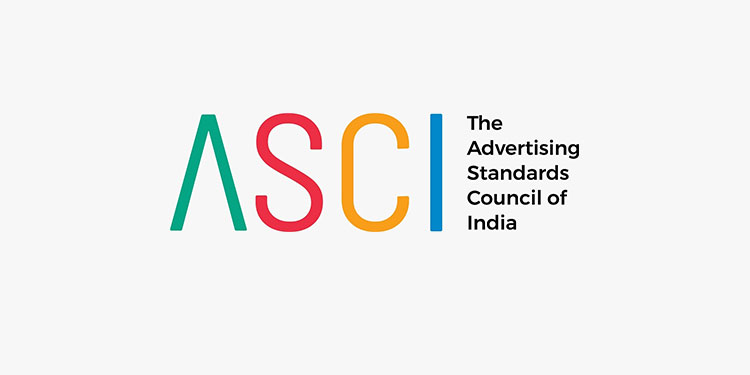An extensive discussion paper released by the Advertising Standards Council of India (ASCI), the self-regulatory body of the advertising industry, has highlighted how UI/UX deployed by digital platforms could manipulate consumer choices and consumption patterns.
According to the paper, these manipulative tactics, or ‘dark patterns’ come in many forms and are present across multiple platforms. In FY 2021-22, 29pc of the advertisements processed by ASCI were disguised by influencers as regular content, which is also a part of dark patterns in advertising. Categories found to be major violators were cryptocurrency, personal care, fashion and e-commerce.
The Indian consumer is not immune to dark patterns, and as online commerce grows, this is an increasing area of consumer vulnerability. A few steps have already been taken in this regard in the recent months.
Recently, the Department of Consumer Affairs summoned cab and two-wheeler aggregators to come clean on their charges and algorithms, as consumer angst and frustration with these services rose to alarming levels. The Department also formed a consultation group to address the issue of fake online reviews. A press release by the Department of Consumer Affairs states “Given that e-commerce involves a virtual shopping experience without any opportunity to physically view or examine the product, consumers heavily rely on reviews posted on e-commerce platforms to see the opinion and experience of user who have already purchased the goods or service. As a result, due to fake and misleading reviews, the right to be informed, which is a consumer right under the Consumer Protection Act, 2019 is violated.”
Although the term “Dark patterns” has only recently made its way into common usage, The Advertising Standards Council of India (ASCI), has been addressing such issues through its existing code on misleading ads. The ASCI code applies across media, including online advertising (including companies’ own websites, pages and handles).
In 2021, ASCI asked social media influencers to disclose promotions, in order to address the issue of disguised ads. As lines between content and ads blur, the ability of consumer to make an informed decision comes under question.
Taking note of the growing global concerns around such practices, ASCI formed a 12-member task force comprising stakeholders from different tech platforms, legal experts, civil society and domain experts. The task force examined key issues related to dark patterns to understand which of these practices potentially violate the ASCI code which inter-alia states: “Advertisements shall not be framed so as to abuse the trust of consumers or exploit their lack of experience or knowledge.”
Not all dark patterns fall under the domain of advertising and hence may be out of ASCI’s remit, however, they could amount to unfair trade practices which compromise consumer interest. ASCI hopes that in the near future, such dark patterns will be addressed by the regulators as they see appropriate in the interest of consumer protection.
Proposed areas of extension to the ASCI code on misleading ads
Drip Pricing: Only a part of a product’s price is disclosed to potential buyers including elements that have to be borne by almost all customers, for example tax. Accordingly, the total price is only revealed at the very end of the buying process, thereby creating ambiguity around the final price as well as preventing easy price comparisons. Quoted prices must include non-optional taxes, duties, fees and charges that apply to all or most buyers.
Bait and Switch: As the name suggests, this pattern occurs when a user takes an action expecting one outcome, but instead is served an outcome they didn’t want. Eg. A consumer may select a product offered at a certain price but is thereafter only able to access products at a higher price; Another example is offering an attractive product and later revealing that it is out of stock, offering an alternative product; Changing the meaning of key symbols to mean the opposite. For example an X on the top right corner, instead of closing an app, may open up the app, or the action that the user was trying to avoid. The X has always meant “close”. But in the interaction, the X means ‘accept/ proceed’.
False urgency: Stating or implying that quantities of a particular product are more limited than they actually are.
Disguised advertising: An advertisement that mimics editorial content must clearly disclose that it is an ad. Examples could be influencer posts, paid reviews, and ads placed in a manner to appear like content.
Other dark patterns outside the remit of advertising content
Privacy: Interfaces that trick users into sharing more information than they intended to. Users may give up this information unknowingly or through practices that obscure or delay the option to opt out of sharing their private information.
Confirm-shaming: Confirm-shaming uses shame to drive users to act. For example, when websites use words that induce shame or guilt to describe the options that consumers wish to exercise, such as declining to sign up for newsletters, or make a donation etc.
Checkbox treachery: Obfuscatory checkboxes are probably the most famous and most common examples of dark patterns. These are usually in the form of opt-in or opt-out checkboxes that businesses use to give customers notional control over how their contact data is used.
Nagging: Repeatedly asking users for the same thing. There is often no option to make it stop, with the hope of eventually breaking users and getting them to agree to sharing data or agreeing to unfair terms. This is commonly seen when websites asking you to download their app, or platforms ask you to give them your phone number or sign up to their services.
Sneak-in basket: When consumers purchase something, additional products are added into the basket of the consumer, without their knowledge. For example, buying insurance with airline tickets, or making a donation to a charitable cause while checking out of an e-commerce site.
Regulators and self-regulators across the globe are stepping up their monitoring game with investments in artificial intelligence that can detect dark patterns and manipulative practices. While legislation and rules in this area will continue to evolve, a culture of consumer respect and meaningful engagement is what is most needed from organizations to keep the online experience kosher.
ASCI has outlined 4 key practices that it intends to address through expanding its code – namely Drip pricing, Bait and Switch, False Urgency and Disguised advertising. ASCI has invited comments from all stakeholders and the members of the public on this proposed expansion of the ASCI code. Please send your comments to [email protected]; the last date to receive these comments is 31st December 2022.

Manisha Kapoor, CEO and Secretary General, ASCI, stated, “There is a thin line between dark patterns and legitimate targeting and persuasion tactics. Dark patterns cause consumer harm and with the ever-increasing presence of advertising on digital platforms, these are now under sharp scrutiny of ad-regulators around the world. Eventually dark patterns ruin consumer experience and increase abandonments, and make the consumer suspicious of the online space. By choosing fair practices that enhance both consumer and shareholder value, brands can develop sustainable ways of consumer engagement. ASCI continues its investment in technology to track and monitor digital advertising to help keep the online experience safe for consumers.”

















